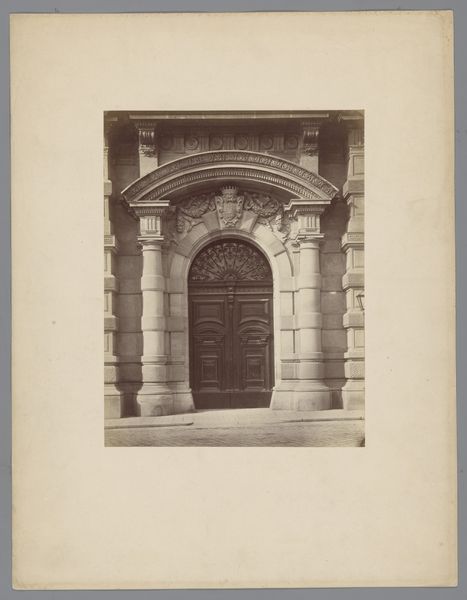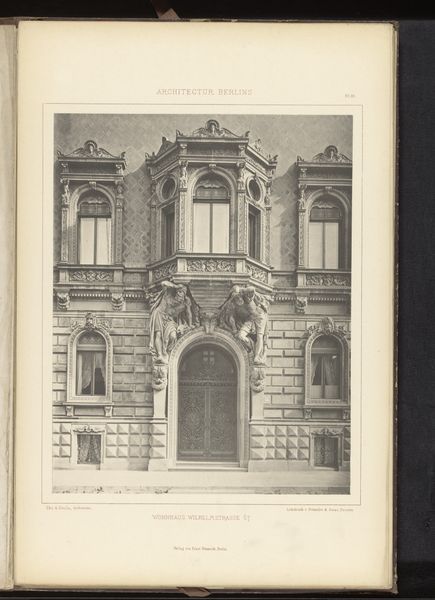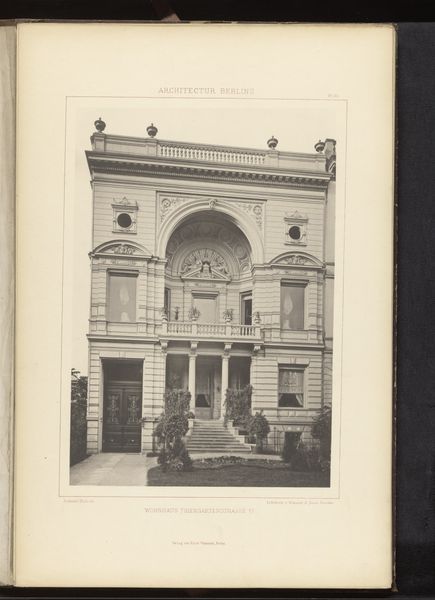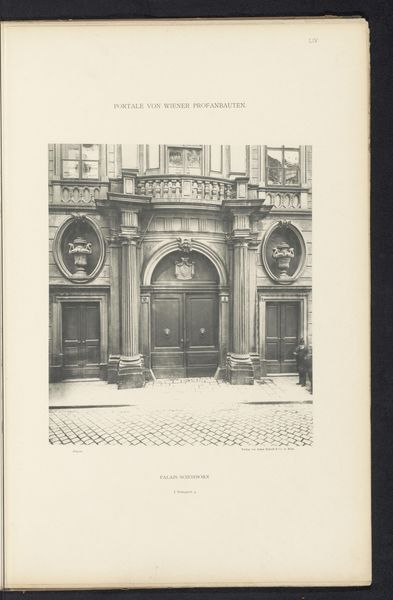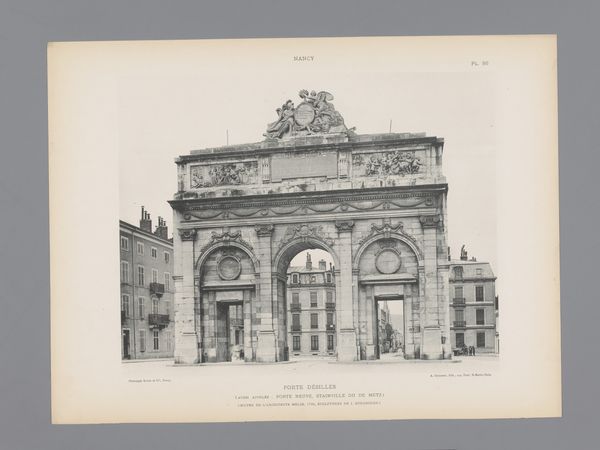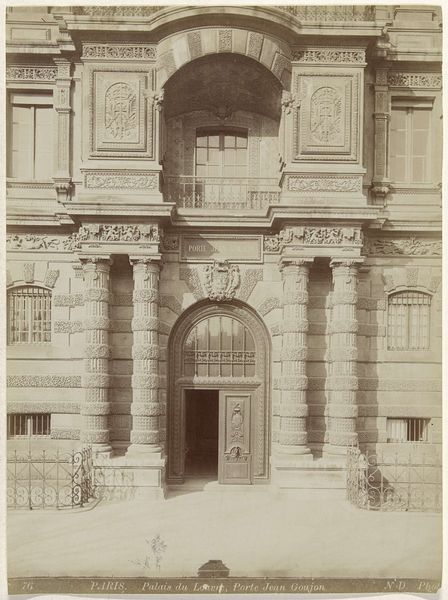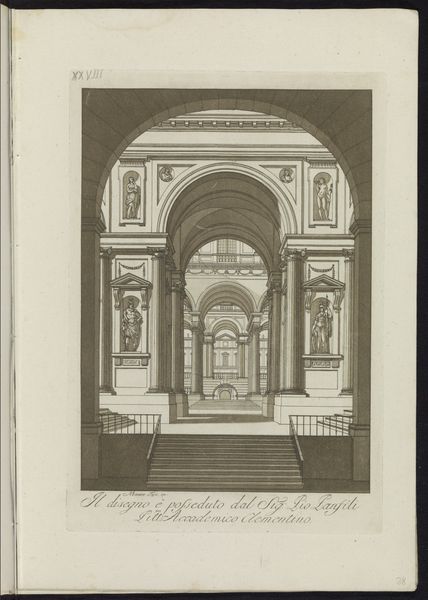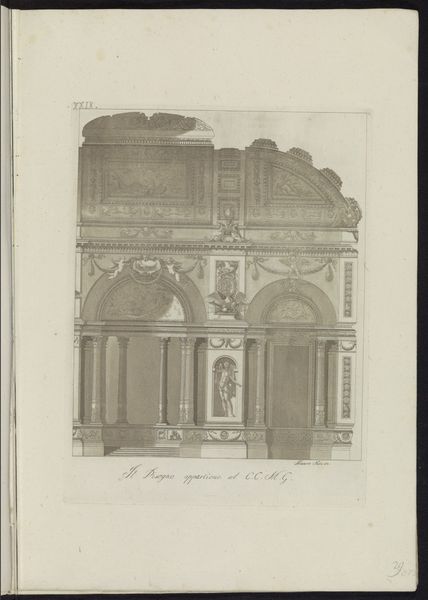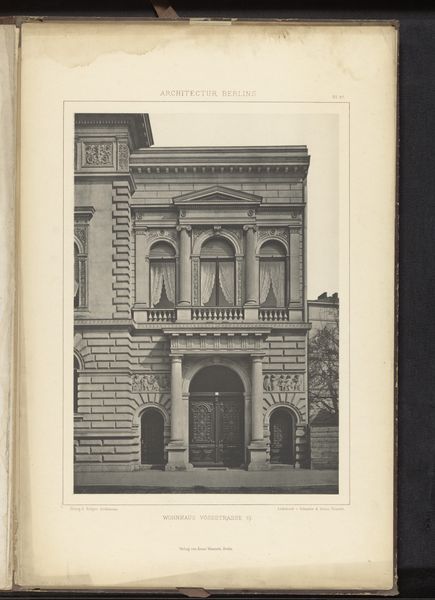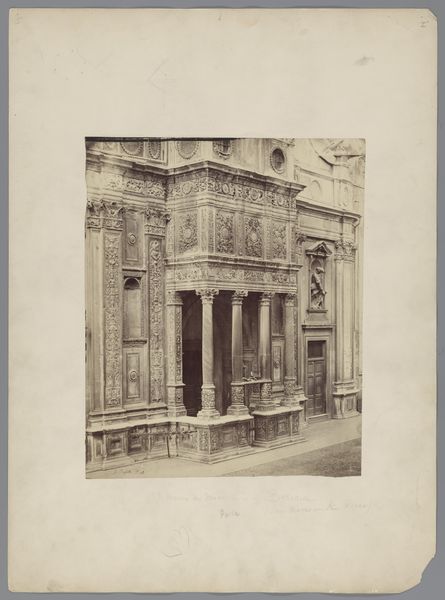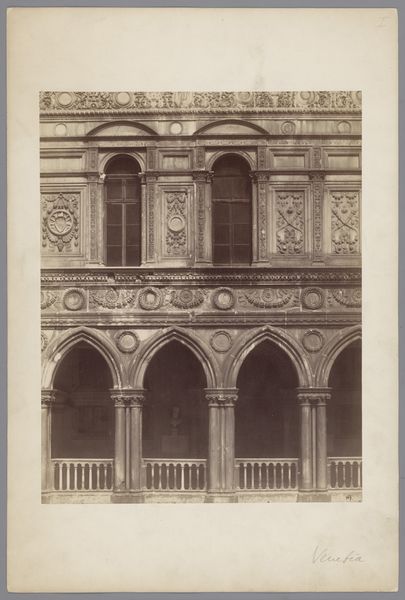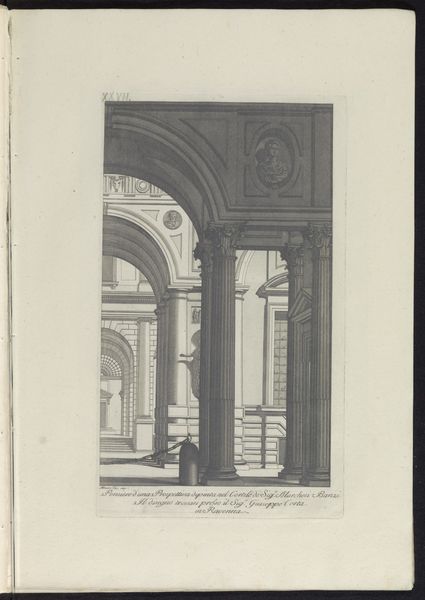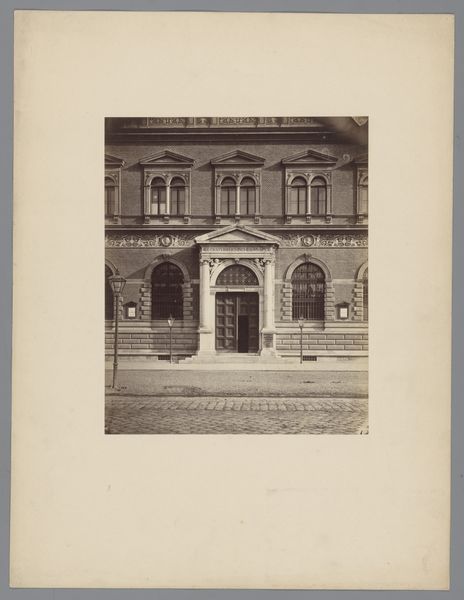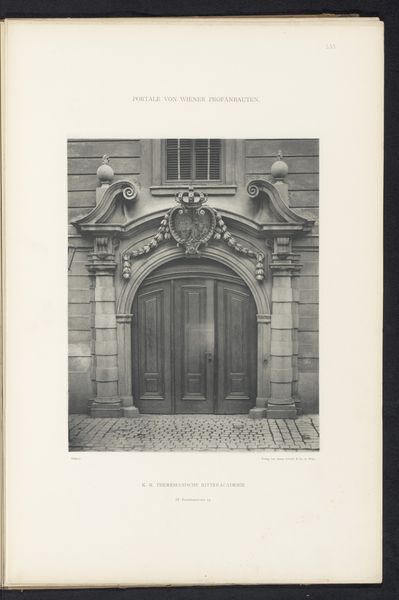
Dimensions: height 269 mm, width 212 mm
Copyright: Rijks Museum: Open Domain
Étienne Neurdein captured this photograph of the Porte Jean Goujon at the Louvre in Paris, using albumen print, a process that was popular in the 19th century. This technique involves coating paper with albumen from egg whites, then exposing it to light through a negative. The albumen print gives the photograph a soft, warm tone, enhancing the architectural details of the doorway. It’s a process that’s quite labor-intensive, requiring careful preparation and handling of materials. This contrasts with the industrial scale of the Louvre itself. The choice of photography as a medium to document architecture also speaks to a shift in how we understand art and craft. While the Louvre is filled with unique, hand-crafted artworks, this photograph presents a mass-producible image of it. Neurdein's work is part of a broader history of how mechanical reproduction changed our perception of cultural heritage, bringing it to a wider audience. By focusing on the materials and processes involved, we see how photography bridges the gap between traditional art and modern industry, democratizing access to iconic landmarks.
Comments
No comments
Be the first to comment and join the conversation on the ultimate creative platform.
